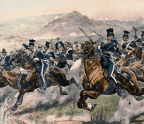SANCTUARY!


Those he passed paid scant attention to the man bicycling across St. Peter’s Square that early October day in Rome in 1942. Dressed in workman’s overalls, he rode straight through the gates of Vatican City, circled the fountains and pedaled past the gardens, seemingly unseen by the Swiss Guards. Not until he approached St. Martha’s House, a conclave for clerics, diplomats and pilgrims, was he finally stopped and questioned by Vatican policeman Anton Call.
The cyclist, a British sailor named Albert Penny, admitted to the carabiniere he had recently escaped from a prisoner of war camp in Viterbo, some 40 miles northwest of Rome. Instead of turning over Penny to counterparts in the Italian police, however, Call alerted Sir D’Arcy Osborne, British envoy and minister plenipotentiary to the Vatican. Osborne in turn petitioned Vatican authorities to allow the POW to remain within their walls, noting the papal state’s neutral status in the war then ravaging Europe.
Authorities granted permission, and Penny lived in Osborne’s apartment at St. Martha’s until formally exchanged for an Italian prisoner. The British seaman was the first of thousands in Italy to receive aid from what became known as the Rome Escape Line. Many such networks operated throughout Europe
You’re reading a preview, subscribe to read more.
Start your free 30 days



